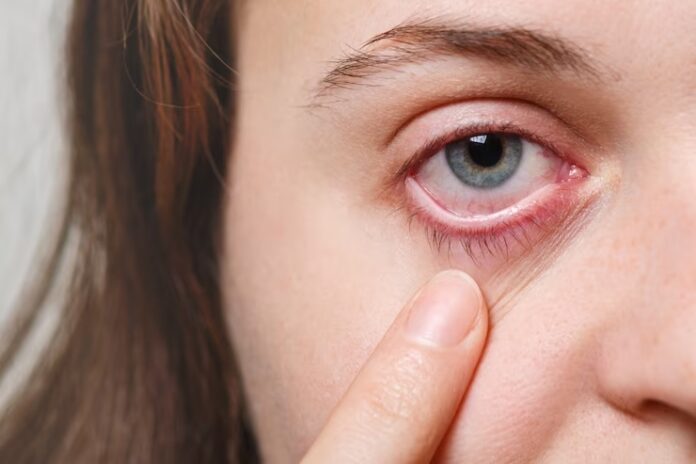Dry eyes, also known as dry eye syndrome or keratoconjunctivitis sicca, is a common eye condition characterized by a lack of sufficient lubrication and moisture on the surface of the eye. This condition can cause discomfort, irritation, and a range of symptoms that affect the quality of vision.
When our eyes are functioning normally, tears are produced by the lacrimal glands, which are located above the outer corner of each eye. These tears help to keep the eyes moist, provide nutrients and oxygen to the cornea (the clear front surface of the eye), and protect against infections. Tears are composed of three layers: an outer oily layer, a middle watery layer, and an inner mucous layer. Each layer has a specific function in maintaining the health and comfort of the eyes.
In individuals with dry eyes, either the quantity or quality of tears is compromised, resulting in an imbalance in tear production and evaporation. This can occur due to various factors, including:
- Decreased tear production: The lacrimal glands may not produce enough tears, leading to insufficient lubrication. This can be caused by aging, hormonal changes (especially in women during menopause), certain medical conditions (such as Sjögren’s syndrome, rheumatoid arthritis, or diabetes), or medications (like antihistamines, decongestants, or antidepressants).
- Increased tear evaporation: Tears evaporate more quickly than normal, leaving the eyes dry. This can happen due to environmental factors like dry air, wind, or air conditioning. Activities that reduce blinking, such as prolonged computer use or reading, can also contribute to increased tear evaporation.
- Poor tear quality: Even if the quantity of tears is sufficient, their composition may be inadequate for proper lubrication. The oily outer layer of tears, produced by the meibomian glands in the eyelids, helps prevent evaporation. Dysfunction or blockage of these glands can lead to an insufficient oil layer, resulting in evaporative dry eye.
Common symptoms of dry eyes include:
- Dryness, itching, or a gritty sensation in the eyes.
- Burning or stinging sensation.
- Redness or bloodshot appearance.
- Blurred vision or fluctuations in vision.
- Sensitivity to light.
- Eye fatigue or discomfort, especially after prolonged visual tasks.
- Excessive tearing (paradoxical response to dryness).
If you suspect you have dry eyes, it is recommended to consult an eye care professional. They can perform a comprehensive eye examination, assess tear production and quality, and recommend appropriate treatment options. Treatment may involve lifestyle modifications, such as using a humidifier, taking breaks during visual tasks, or avoiding irritants like smoke. Artificial tears or lubricating eye drops can provide temporary relief by supplementing the natural tear film. In some cases, medications, tear duct plugs to reduce tear drainage, or treatments to improve the function of the meibomian glands may be recommended.
Overall, dry eyes can be a chronic condition requiring ongoing management. It is important to seek professional advice to ensure proper diagnosis and personalized treatment for optimal eye health and comfort.



